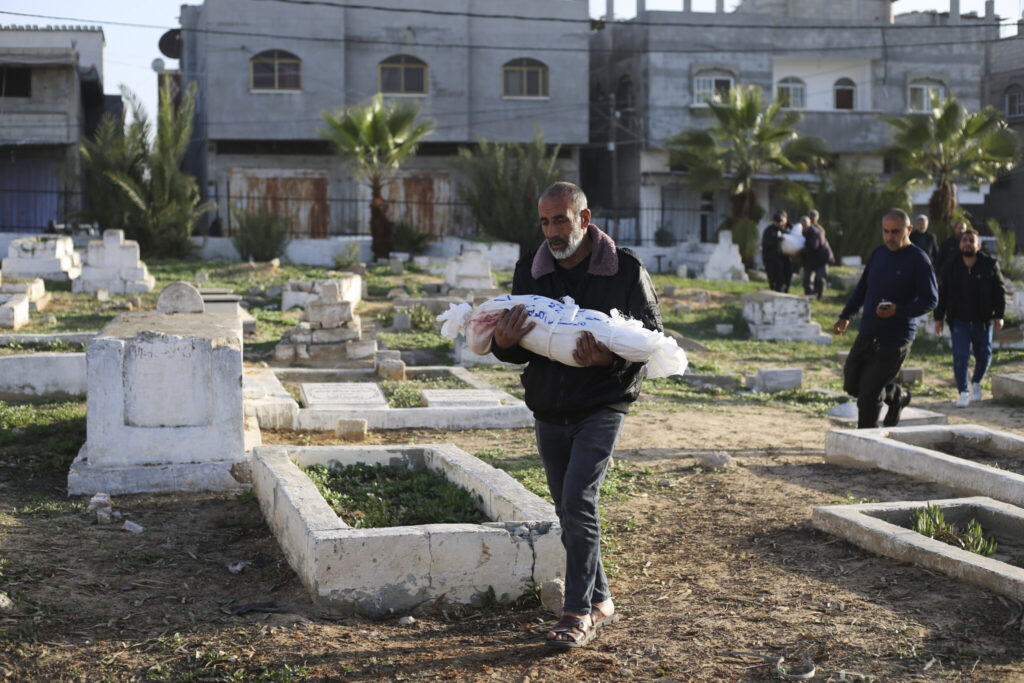More than 20,000 Palestinians have died in Gaza during Israel’s war against Hamas, health officials said Friday, the latest indication of the staggering cost of the conflict as Israel expands its ground offensive and orders tens of thousands more people to leave their homes.
Quick Read
- Escalating Death Toll in Gaza Conflict:
- Deaths: Over 20,000 Palestinians.
- Impact: Nearly 1% of Gaza’s prewar population.
- Duration: Over 11 weeks of conflict.
- Widespread Displacement and Destruction:
- Displaced Population: Approximately 85% of Gaza’s residents.
- Destruction: Extensive areas of the coastal enclave leveled.
- Starvation Crisis:
- Affected Population: Over half a million people, a quarter of Gaza’s population.
- Cause: Israel’s bombardment and siege in response to Hamas’ Oct. 7 attack.
- UN Security Council Vote Delayed:
- Cause: Emergency situation and high-level negotiations.
- U.S. Position: Backs revised resolution for creating cease-fire conditions.
- International Stance: Other countries prefer a stronger text for immediate cease-fire.
- Martin Griffiths’ (UN Humanitarian Affairs Chief) Comment:
- Statement: Criticized prolonged conflict and inaction.
- Israel’s Military Offensive:
- Objective: Destroy Hamas, ruling Gaza for 16 years.
- Strategy: Expand ground offensive, focusing on southern Gaza.
- Civilian Impact: Tens of thousands ordered to evacuate.
- Israeli Military Actions:
- Additional Forces: Deployment in Khan Younis.
- New Evacuation Orders: In Burej refugee camp and surrounding areas.
- Casualties and Targeted Areas:
- Recent Incident: Airstrike in Rafah, killing six, including a family.
- Continued Strikes: In northern and southern parts of Gaza.
- Health Ministry’s Casualty Report:
- Deaths: 20,057, with over 50,000 wounded.
- Classification: No distinction between combatant and civilian deaths.
- Israel’s Stance:
- Blames Hamas: For high civilian death toll.
- War Declaration: Response to Hamas militants’ cross-border attack.
- Military Claim: Killed thousands of Hamas militants.
- Communication and Aid Challenges:
- Restoration: Gradual return of phone and internet services.
- Impact: Aid delivery hampered, only covering a fraction of needs.
- Hunger Crisis: Worse than recent crises in Afghanistan and Yemen.
- Health Sector Crisis in Gaza:
- Functioning Facilities: Only nine partially operational.
- Disease Outbreak: Increase in various diseases.
- WHO Report: Dire conditions in hospitals, lack of supplies and care.
The Associated Press has the story:
Gaza death toll tops 20,000. Israel expands ground offensive despite pressure to scale back
Newslooks- RAFAH, Gaza Strip (AP)
More than 20,000 Palestinians have died in Gaza during Israel’s war against Hamas, health officials said Friday, the latest indication of the staggering cost of the conflict as Israel expands its ground offensive and orders tens of thousands more people to leave their homes.
The deaths, amounting to nearly 1% of the territory’s prewar population, are just one measure of the devastation wrought by the conflict that over 11 weeks has displaced nearly 85% of Gaza’s people and leveled wide swaths of the tiny coastal enclave.
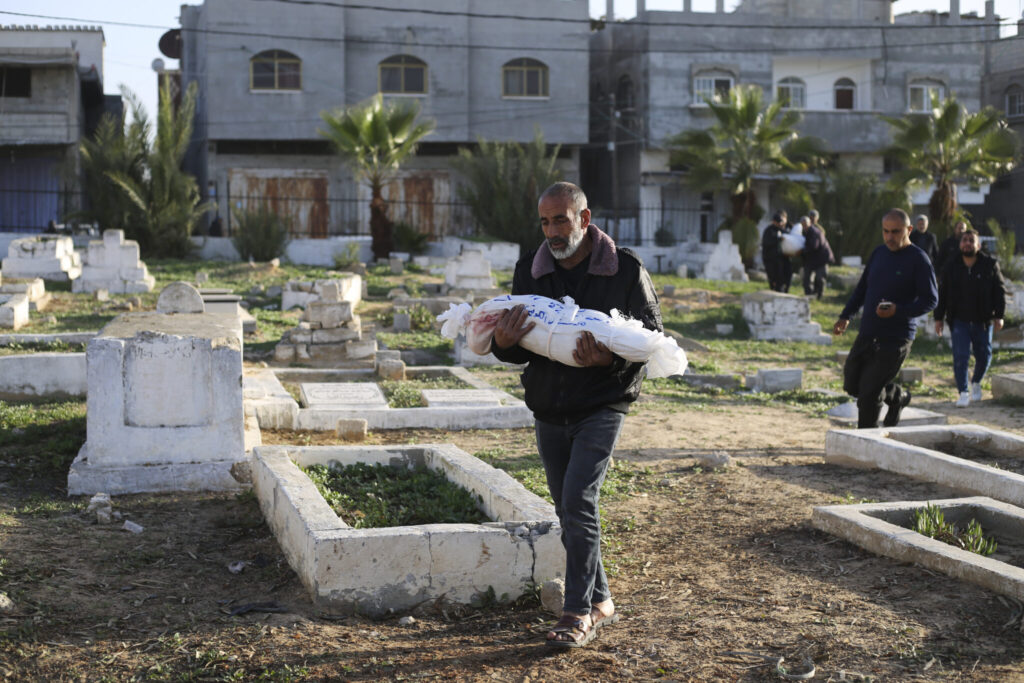
More than half a million people in Gaza — a quarter of the population — are starving, according to a report Thursday from the United Nations and other agencies describing the crisis caused by Israel’s bombardment and siege of the territory in response to Hamas’ Oct. 7 attack.
Despite the emergency, a U.N. Security Council vote on aid deliveries and terms for a cease-fire was delayed again late Thursday, after days of high-level negotiations.
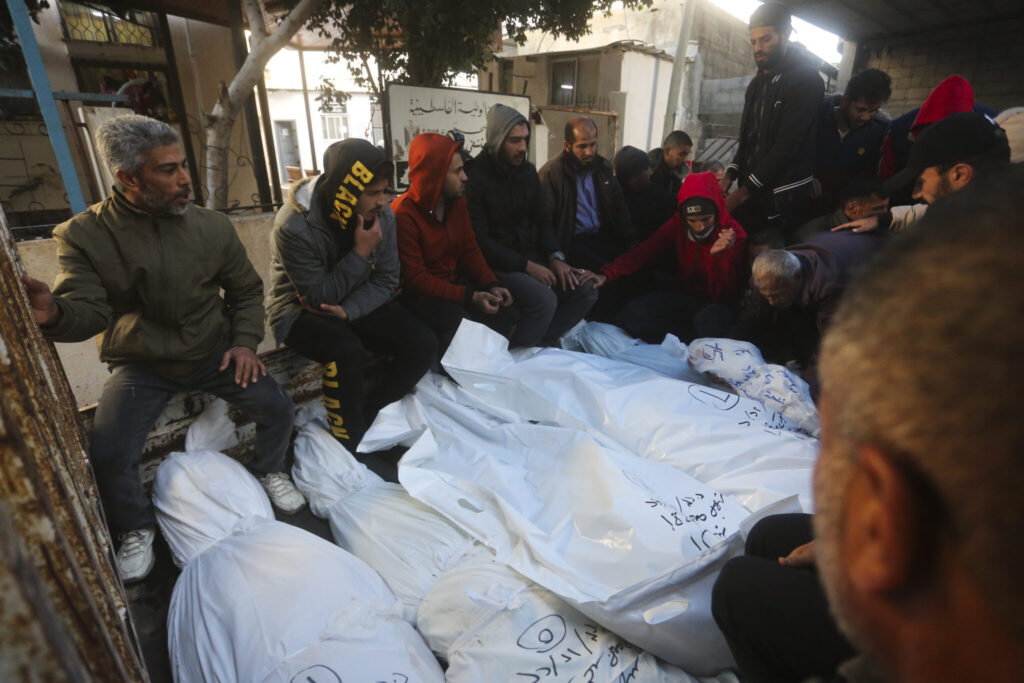
The United States, which has veto power, has pushed back against calls for an immediate cease-fire and giving the U.N. sole responsibility for inspecting aid deliveries. Israel, citing security grounds, insists it needs to be able to screen goods entering Gaza.
The U.S. said it would back a revised resolution that calls for “creating the conditions” for a cease-fire, rather than an immediate end to fighting. Other countries support a stronger text and said diplomats would need to consult their governments before a vote, which is expected Friday.
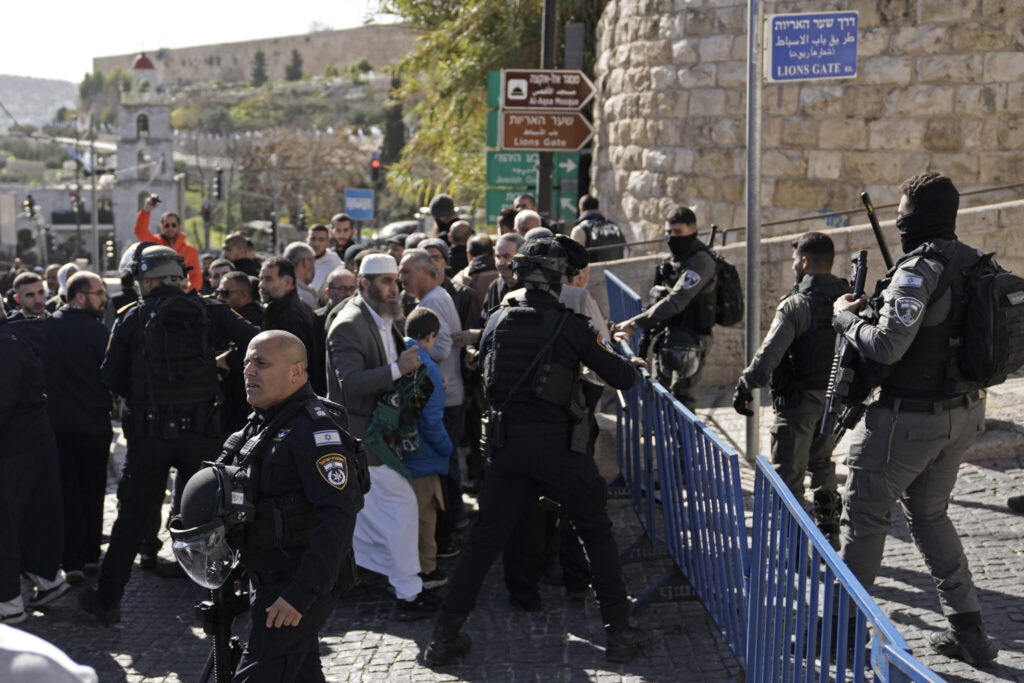
Martin Griffiths, the U.N. humanitarian affairs chief, lamented the world’s inaction.
“That such a brutal conflict has been allowed to continue and for this long — despite the widespread condemnation, the physical and mental toll and the massive destruction — is an indelible stain on our collective conscience,” he wrote in a post on X, the social media platform formerly known as Twitter.
Israel, shielded by the United States, has resisted international pressure to scale back its offensive and has said it would press on until Hamas, the militant group that has ruled Gaza for 16 years, has been destroyed.
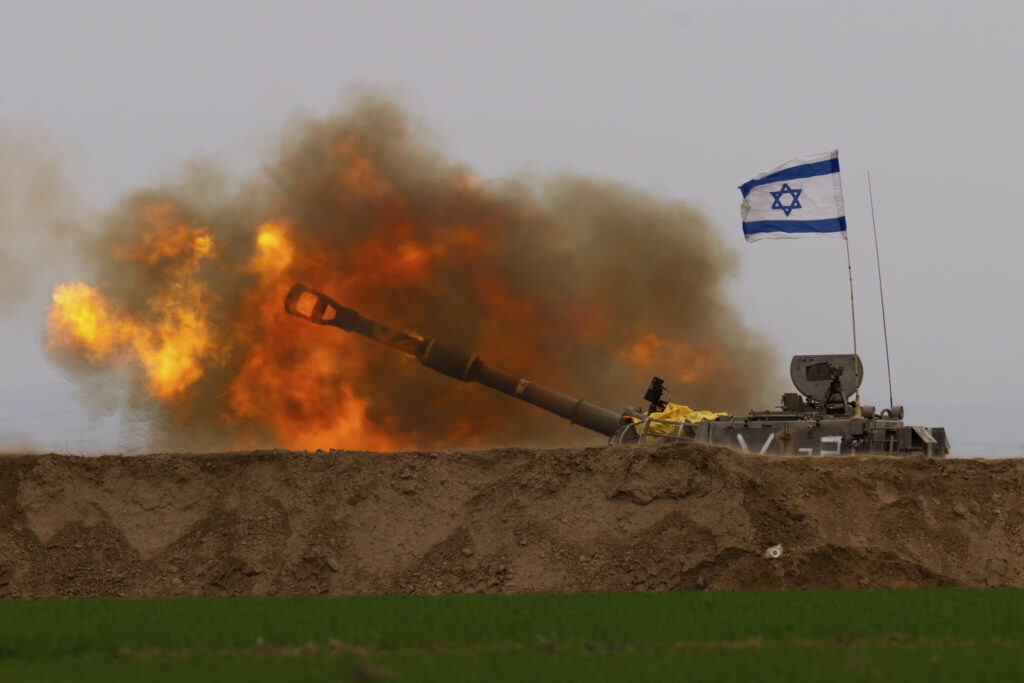
The military has said that months of fighting lie ahead in southern Gaza, an area packed with the vast majority of the enclave’s 2.3 million people, many of whom were ordered to flee combat in the north earlier in the war.
Since then, evacuation orders have pushed displaced civilians into ever-smaller areas of the south as troops focus on the city of Khan Younis, Gaza’s second-largest.
The military said late Thursday that it is sending more ground forces, including combat engineers, to Khan Younis to target Hamas militants above ground and in tunnels, and on Friday, it ordered tens of thousands of residents to leave their homes in Burej, an urban refugee camp, and surrounding communities, also in the south.
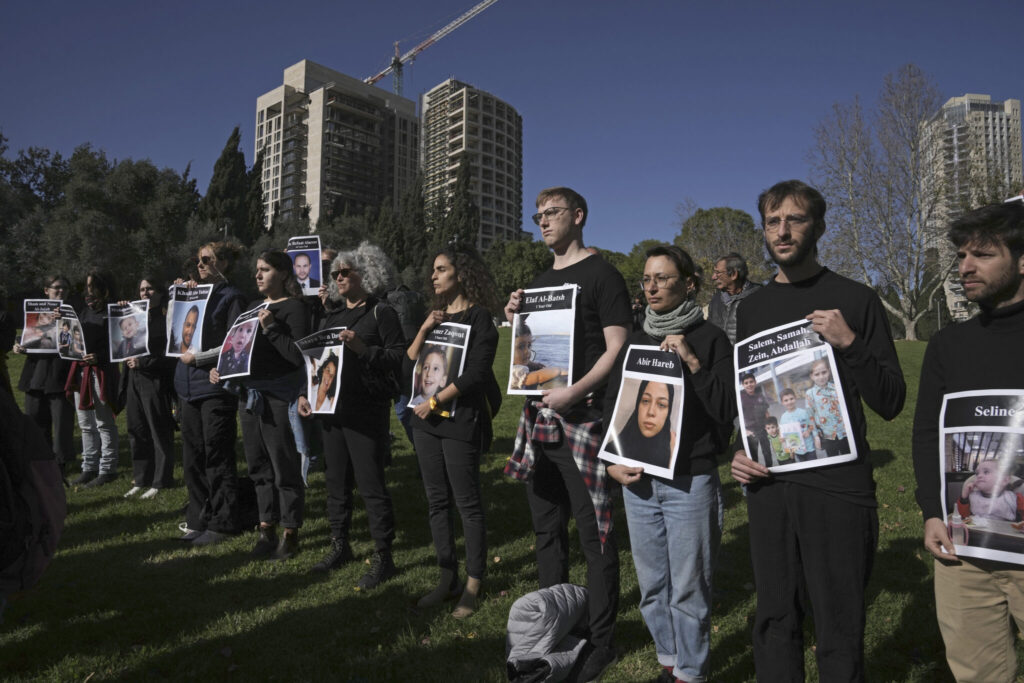
In the city of Rafah, on the border with Egypt, an airstrike on a house killed six people, according to Associated Press journalists who saw the bodies at a hospital. Among the dead were a blind man, his wife and their 4-month-old child, said the infant’s grandfather, Anwar Dhair.
Rafah is one of the few places in Gaza not under evacuation orders, but has been targeted in Israeli strikes almost every day.
The air and ground campaign also continued in the north, even as Israel says it is in the final stages of clearing out Hamas militants there.
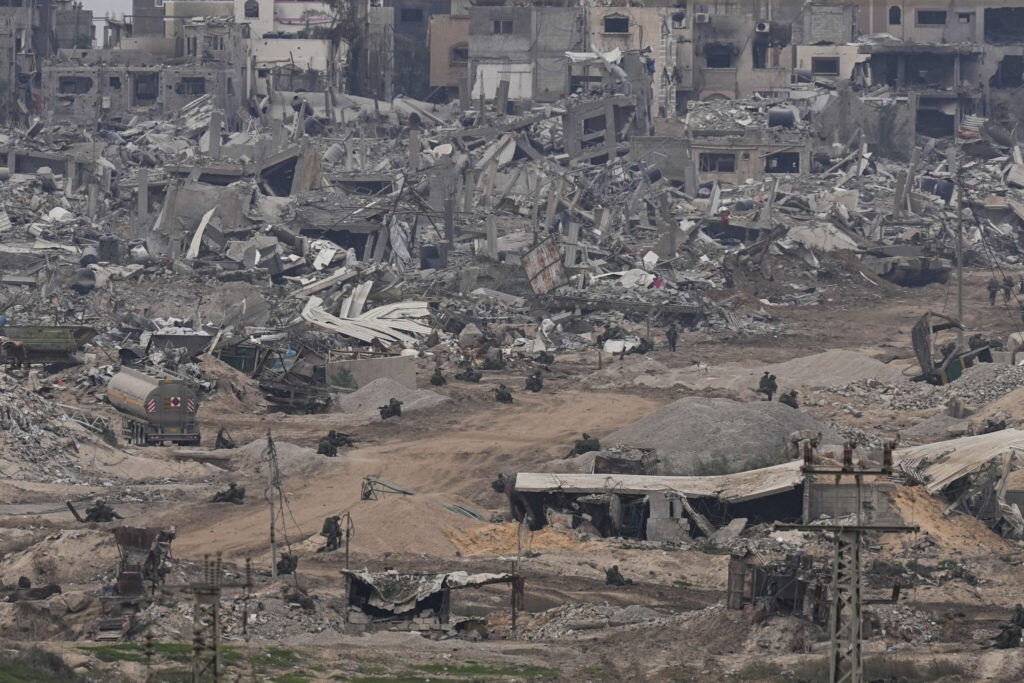
Mustafa Abu Taha, a Palestinian farm worker, said many areas of his hard-hit Gaza City neighborhood of Shijaiyah have become inaccessible because of massive destruction from airstrikes.
“They are hitting anything moving,” he said of Israeli forces.
Gaza’s Health Ministry said Friday that it has documented 20,057 deaths in the fighting and more than 50,000 wounded. It does not differentiate between combatant and civilian deaths. It has previously said that roughly two-thirds of the dead were women or minors.
Israel blames Hamas for the high civilian death toll during its intense air and ground campaign, citing the group’s use of crowded residential areas for military purposes.

Israel declared war after Hamas militants stormed across its border and killed some 1,200 people and kidnapped 240 others. Israel’s military says 139 of its soldiers have been killed in the ground offensive. It says it has killed thousands of Hamas militants, including about 2,000 in the past three weeks, but it has not presented any evidence to back up the claim.
Meanwhile, phone and internet services were gradually being restored late Thursday, after the latest communications blackout of 35 hours.
Repeated cuts in communications have hampered aid deliveries, which cover only a fraction of the unprecedented humanitarian needs in Gaza.
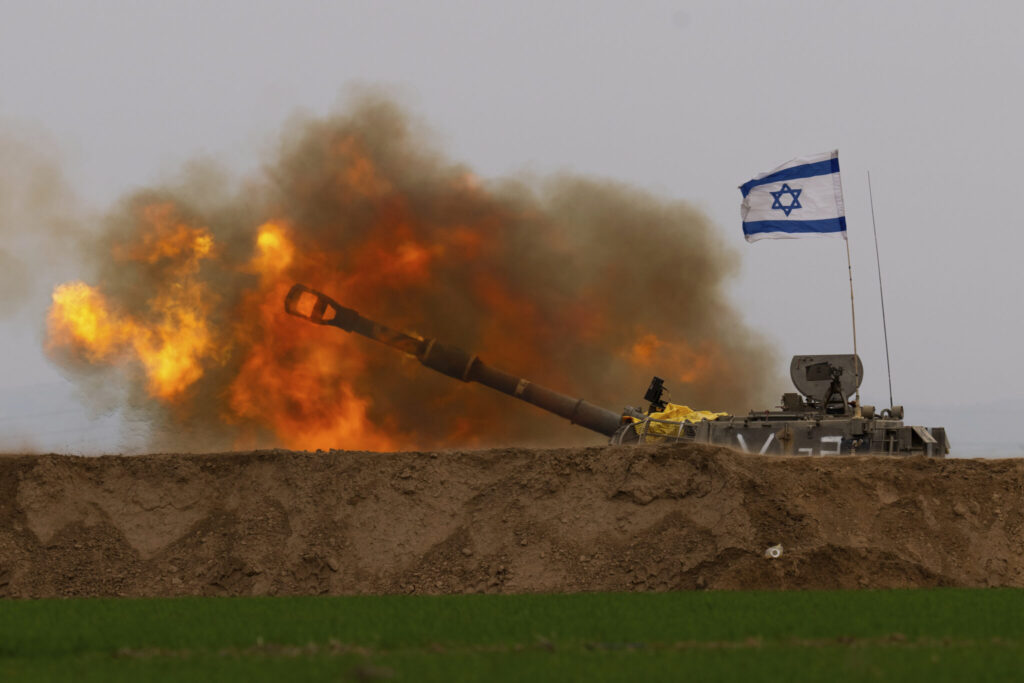
The hunger eclipsed even the near-famines of recent years in Afghanistan and Yemen, according to Thursday’s report, which warned that the risk of famine is “increasing each day,” blaming the hunger on insufficient aid entering Gaza.
“I have never seen something at the scale that is happening in Gaza. And at this speed,” said Arif Husain, chief economist for the U.N.’s World Food Program.
An Israeli liaison officer with Gaza claimed there is no food shortage in Gaza, saying sufficient aid is getting through.
“The reserves in Gaza Strip are sufficient for the near term,” Col. Moshe Tetro, a defense official, said from the Kerem Shalom cargo crossing, opened by Israel several days ago amid international demands to improve the flow of aid. Tetro did not elaborate.
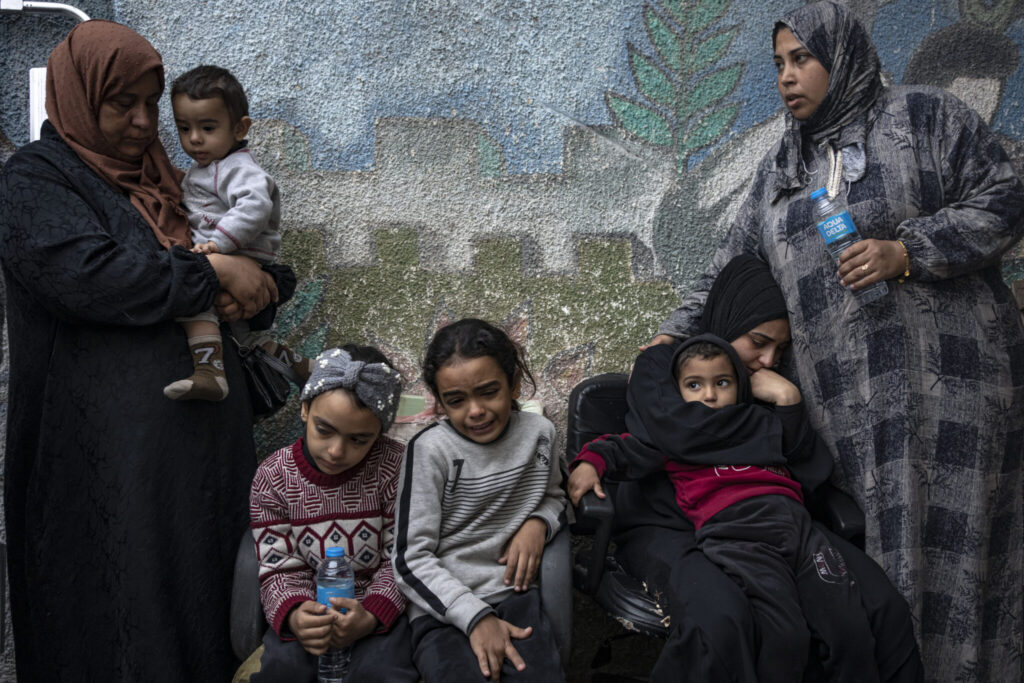
The war has also pushed Gaza’s health sector into collapse.
Only nine of its 36 health facilities are still partially functioning, all located in the south, according to the World Health Organization.
The agency reported soaring rates of diseases in Gaza, including a five-fold rise in diarrhea and increases in cases of meningitis, skin rashes and scabies.
WHO relief workers reported “unbearable” scenes in two hospitals they visited in northern Gaza: Bedridden patients with untreated wounds cry out for water, the few remaining doctors and nurses have no supplies, and bodies are lined up in the courtyard.
“With the health system on its knees,” the organization said, “those facing the deadly combination of hunger and disease are left with few options.”

